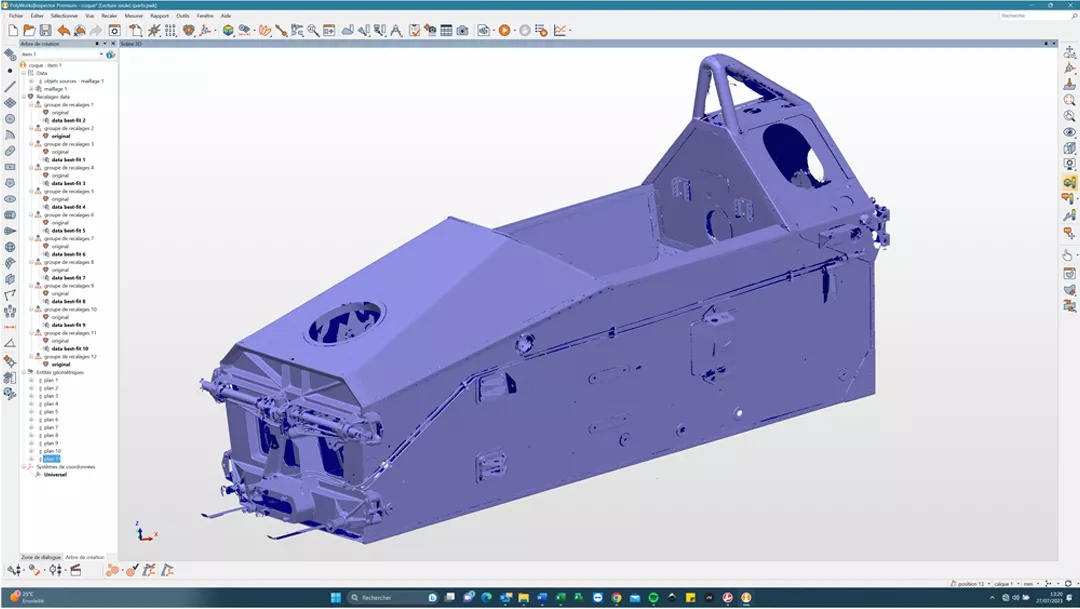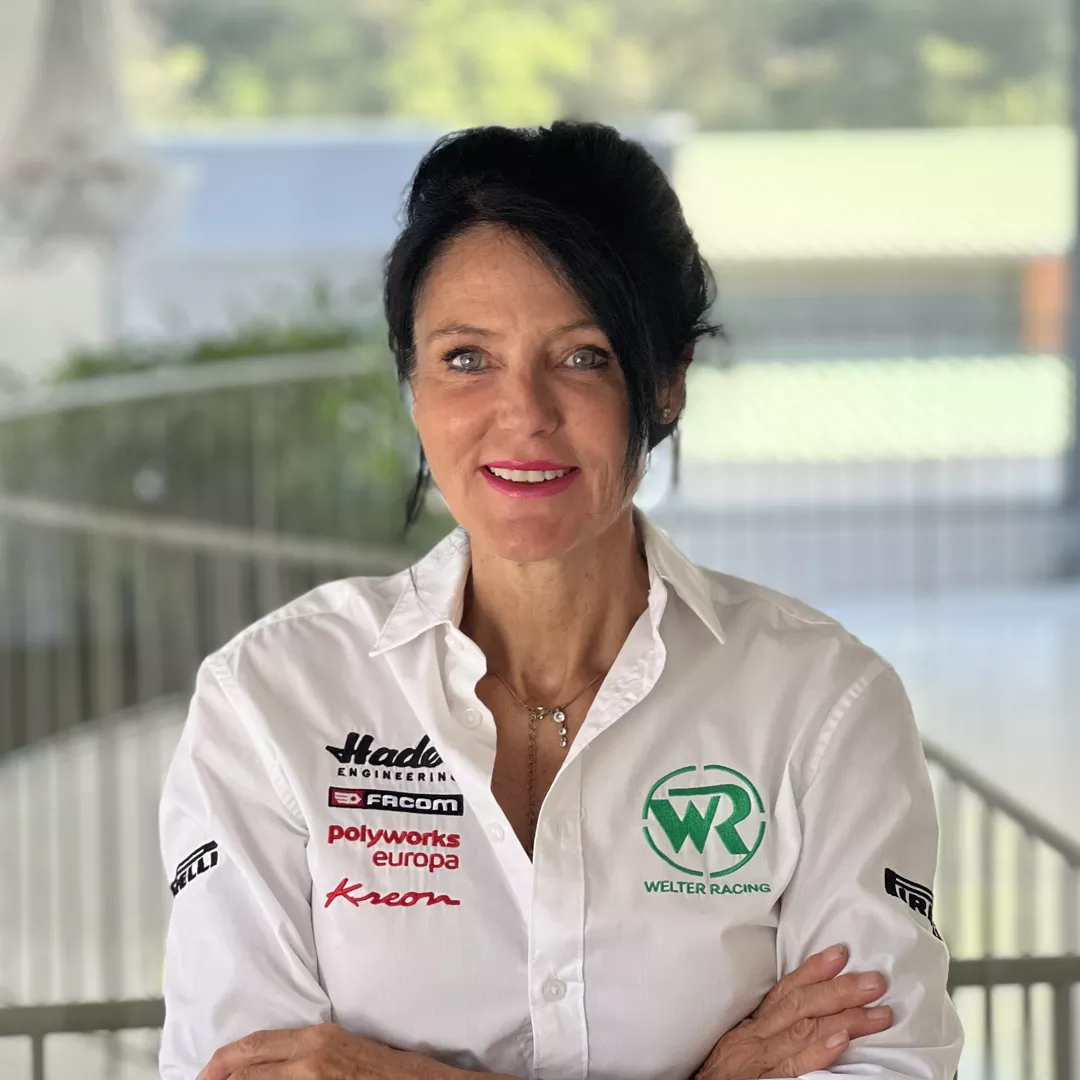The Combined Kreon and PolyWorks® Solution Revives Welter Racing No. 9 at Le Mans
At the 2023 edition of the Le Mans Classic motor race, held under the 24 Hours of Le Mans Centenary banner, the Welter Racing (WR) team received an especially warm welcome from enthusiasts during the initial runs of its No. 9 car.

Those who appreciate fine mechanical engineering were able to travel back in time to the French team’s heyday, in 1995, when Welter Racing placed its No. 8 and No. 9 cars in pole position at the start of the race. It was an extraordinary achievement for a private French team to finish ahead of the prestigious Ferrari and McLaren teams.
Thirteen years after it last took part in the 24 Hours of Le Mans, Welter Racing now turns to the preservation of its heritage while focusing on historical motor racing.
“And what better symbol than to return to the 24 Hours of Le Mans Centenary with our most emblematic car?” says Rachel Welter, Manager at Welter Racing. Thus, the decision was made to enter No. 9, despite the many challenges involved.
The Challenge
Five months to prepare and digitize the car
It began with a desire to field the actual car instead of a copy or a rebuild. “The car must keep its soul,” says Ms. Welter. “And to keep its soul, we had to preserve the original parts.”
The team had a significant problem, however, since very few spare parts were available: “Considering the small size of the team, cars were built on a unit-by-unit basis at the time and in a fairly ‘artisanal’ way,” says Alexandre Laurent, head of Welter Racing’s research and engineering department. “This explains the lack of traceability, plans, or molds. The only plans existed on tracing paper and they faded away over time. Preserving history was not on our agenda.”

The simplicity of the PolyWorks software platform makes it incredibly intuitive and easy to use (shown here, the complete scan of the WR LM94 chassis in PolyWorks|InspectorTM).
The Solution
The absence of any “memory” meant that parts, or even the entire car, could not be remanufactured in the event of equipment failure. Only approximate parts could be made, none of which would have been identical to those from the original car. “So, we decided to create a digital memory of the entire car in its current state while preparing No. 9. in parallel. This meant scanning every part, including the body, flat floor, and extractors, while integrating every support with the chassis, the chassis itself, the pedal carriage layout, etc.,” says Mr. Laurent, listing only a few of the parts involved.
This required the digitization of an enormous number of parts, bearing in mind that there was very little time between the decision to enter the Le Mans Classic 2023 and the start date of the race. “We only had five months ahead of us when, under normal circumstances, this would have taken between a year and a year and a half, working full time,” says Mr. Laurent.
With research experience in the retrofitting of electric vehicles, Mr. Laurent initially turned to a competing solution. “Despite the comfortable working conditions involved, we still had to combine it with photogrammetry to ensure a correct alignment,” he says, regretfully.

The repeatability and reliability of Kreon Technologies’ Ace measuring arm (shown here, the chassis scan) go well beyond those of competing solutions.
The Kreon measuring arm combined with PolyWorks
Mr. Laurent was immediately won over by this solution after a presentation of the Ace measuring arm by Kreon Technologies, combined with a Skyline Wide laser scanner and InnovMetric’s PolyWorks software platform. “It must be the fastest sale Kreon Technologies has ever made,” he says, laughing.
“The fact that our partner is a company with an eye on association and heritage preservation does not mean that we can’t provide it with industrial tools,” says Loïc Marquet, Regional Sales Manager at PolyWorks Europa, InnovMetric’s French subsidiary. “Kreon Technologies, one of our equipment partners, did not hesitate to suggest PolyWorks as a solution to meet the productivity needs of customers like Welter Racing.”
The Benefits
Mr. Laurent’s enthusiasm clearly attests to the advantages of the combined solution from Kreon Technologies and InnovMetric: “The measuring arm’s capabilities in terms of repeatability and reliability go far beyond those of the initial, competing solution. The simplicity of the software platform makes it incredibly easy to use.”
This characteristic became essential with the constant use of the measuring arm: as soon as a mechanical part was dismantled, it was scanned.
“And if a hole appeared on the surface, all you had to do was rescan it, thanks to the real-time polygon mesh functionality. Meanwhile, the selection tools available in PolyWorks enable us to remove the support, 'clean up' pixels, and more. The service providers used for our previous solutions always charged us to 'clean' the parts, then to 'clean' the scans. Parts that used to take half a day to scan, or even a full day, could now be scanned in half an hour, or an hour at the most,” says Mr. Laurent, who goes on to highlight the ease with which even an aluminum chassis can be scanned, along with parts in brilliant black or chrome.
The noticeably short scan times also meant that certain parts could be remanufactured in record time. These included a “leaky” exchanger, 16-inch diameter rims that no one currently manufactures, the fuel tank and airbox that were modified to fit the new turbo since the older one no longer exists, and a rear driveshaft that broke under supercharged pressure during the race.
“For the wheels, where the brake calipers lick the rim – we have no more than 2 mm of play here – we removed the specific inner hub, scanned the hub and rim, then rebuilt it to design the new hub for the new rim,” says Mr. Laurent. “The rims were manufactured by Braid. We were able to make sure that everything was always moving along perfectly, and once we received them, the new rims were fitted without any problems.”
Future Projects
Reduce reverse-engineering time
Now that the Le Mans Classic is over, the next phase for Welter Racing involves the 3D modeling of every car component to create detached parts (mandrils, hub carriers, chassis, pedal carriage, etc.), along with a digital twin of No. 9. Plans are already underway to rebuild other cars, including a two-seater. To achieve this, the manufacturer intends to use PolyWorks|Modeler’s next-generation automatic surfacing technology, which will save a considerable amount of time.
“The combination of high-quality scans from the outset, even if it means spending several minutes on each scan, along with good reconstruction algorithms through the PolyWorks|Modeler™ tools, will cut reverse-engineering time by half,” says Mr. Marquet. To make the most of the PolyWorks|Modeler features, including dimensional measurements, and the PolyWorks platform in general, PolyWorks Europa provides its customers with technical support between 8 a.m. and 5 p.m.
“For us, service is fundamental, because if a PolyWorks user becomes a champion, no one will be better suited to promote our platform,” says Stefano Belotti, Vice President of Sales at PolyWorks Europa.
Reverse engineering the WR LM 94 in PolyWorks|Modeler.


Rachel Welter,
Manager at Welter Racing.
More Than Satisfied
To sum up, Ms. Welter is more than satisfied with the collaboration between Kreon Technologies and PolyWorks Europa: “We managed to take the symbolic No. 9 to Le Mans in memory of Gérard Welter, and present an actual car, fully restored and operational. It is a privilege to have access to industrial tools, like the measuring arm combined with a laser scanner and the PolyWorks software, the latter of which is also used in other competitions (Formula 1, Formula E). The solution helps broaden the scope of what is possible in the restoration industry.”

Alexandre Laurent,
head of Welter Racing’s Research and Engineering department.